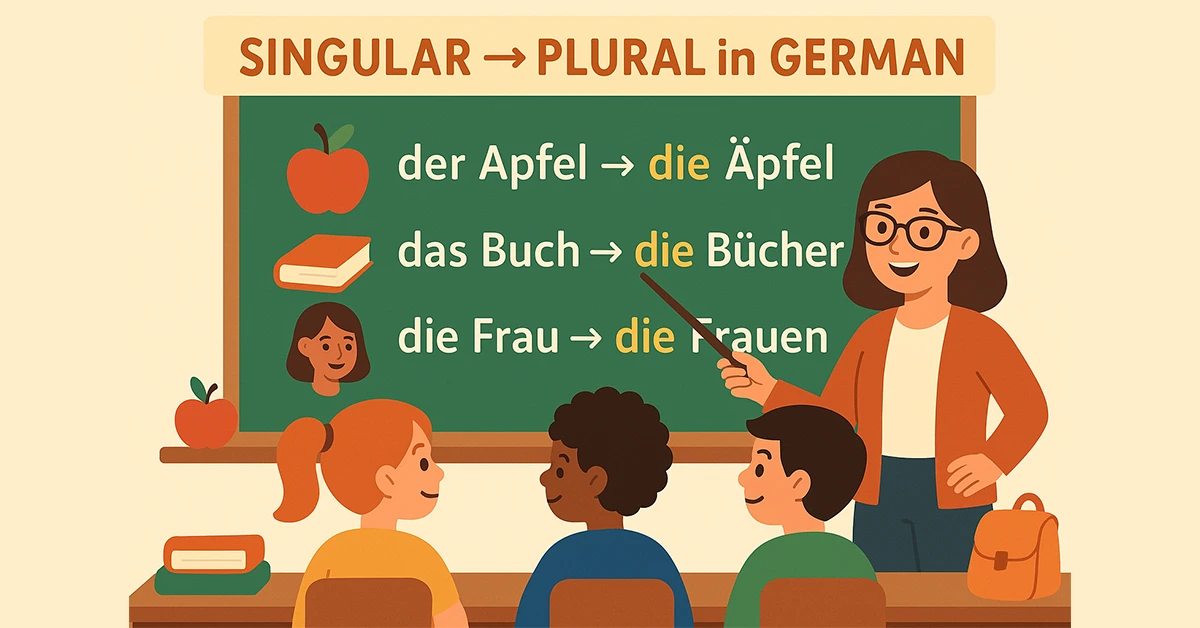German plural forms
-

German Plural Forms Explained – A1 Beginner’s Complete Guide
Learn German plural forms easily with this complete A1 beginner’s guide. Discover rules, patterns, examples, and quizzes to master German noun plurals step by step.

Learn German plural forms easily with this complete A1 beginner’s guide. Discover rules, patterns, examples, and quizzes to master German noun plurals step by step.